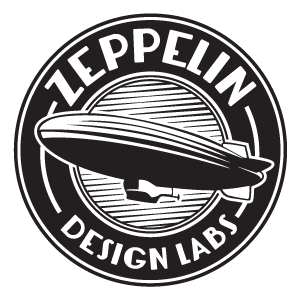Forum Replies Created
-
AuthorPosts
-
YummyFuzz
ParticipantHello ZDL,
I noticed there was a new version of the Quaverato software in Github, v2.4.2 which I’ve loaded into my device. I can see all the new lines are around the “relay_pin_Isolator”, just wanted to see if you could add a release note for what this version does.
Kind regards,
YummyFuzz
YummyFuzz
ParticipantHello Brach,
I just did this mod with R2 at 220k, and R3 as a 500k trimpot today, and wanted to report back that it does indeed get rid of the high frequency loss when the pedal is on its own, as well as helping it to work better with other pedals (my Ge Fuzz Face for example).
Unity gain for me is when the Volume knob is around 10-11 o’clock.
With the Depth knob at 0, starting with the trimpot set to 220k, I found the gain added a little to high, and ended up settling around 168k, which gave a nice clean transition between effect off and on tone-wise, with just a little bit of added warmth when on.Experimented with R3 trimpot at 50k = Unity at about 3-4 o’clock with a weedy/tinny sound. With R3 trimpot at 400k = Unity at about 8′ o’clock with a little distortion, and with the Volume knob turned up full, is quite the overdrive pedal.
Thank you for the advice.
Kind Regards,
YummyFuzz
YummyFuzz
ParticipantHello ZDL,
I wanted to see if you could expand on your suggestion above to change R2 and R3 from 10K to 220K, on what that part of the circuit does, and how this mod affects it? I was looking to use 200K trimpots in those positions and experiment to see if I could find a happy medium for using the Quaverato on its own, or with a buffer before. Do I need to keep equal values for R2 and R3 as I experiment through the range?
Alternatively, I see your news of version 8.2 of the schematic which looks to have some changes around the input opamp wiring, with a 1M resistor, and no 10K resistor across pins 6 and 7. Are there new mods based on lessons learned that can be made to the old circuit version to help the Quaverator “play nice” with other pedals, or is R2 and R3 still the recommendation?
YummyFuzz
ParticipantSuccess!
I was able to verify and compile the Quaverato_2.3.6.ino in Arduino 1.8.9, and flash it to my Quaverato with my USBasp ISP programmer. Arduino did throw and error “avrdude: warning: cannot set sck period. please check for usbasp firmware update.” but a quick Google suggested that was irrelevant, and the load was successful.
Checking the pedal version, flashes 2 3 6, and the first thing I noticed was how much smoother the rate knob behaves.
Things I learned:
Arduino
File->Manager->Settings->Additional Boards Manager URLs: (and paste in)
https://mcudude.github.io/MiniCore/package_MCUdude_MiniCore_index.json
In order to see the MiniCore Boards under ToolsIn order to get it to compile, I had to edit in the .ino file as below:
#include <ramp256.h>
#include <saw256.h>
#include <sine256.h> //This table has been modified
#include <sq256.h>
#include <tri256.h>To
#include “ramp256.h”
#include “saw256.h”
#include “sine256.h” //This table has been modified
#include “sq256.h”
#include “tri256.h”Because something about the angle bracket (<>) if it is in the library path (which is isn’t, i.e I didn’t use the Include Library->Add .ZIP Library for the wave tables), and double quotes (“”) if it is just in the sketch folder.
It compiled, then I found the right driver for my USBasp (https://zadig.akeo.ie/), and flashed it to the board with Sketch->Upload Using Programmer.
I’m so happy! Thank you so much for the super prompt response.
I have one followup question regarding the instructions in 7a:
7a. If your pedal does not have presets saved you can flash the dafaults by placing the quaveratoeeprom.hex file in the same place as your compiled sketch and appending ” -U eeprom:w:quaveratoeeprom.hex:i” to the above command line.About what you mean by presets? How do you save presets? What happens without presets? (not sure I understand).
Thank you again, now I know I can compile, load, and reset, I’ll get experimenting.
I’ll let you know how I go.
YummyFuzz
ParticipantSo it occurred to me that the .h files are the wave tables (ramp, saw, sine, sq, tri) step one is referring to, but it will also need:
#include <MIDI.h>
#include <EEPROMex.h>I’m just looking at the instructions for the other ZDL products in GitHub which seem to have a bit more detail that may help me with the Quaverato.
-
AuthorPosts


